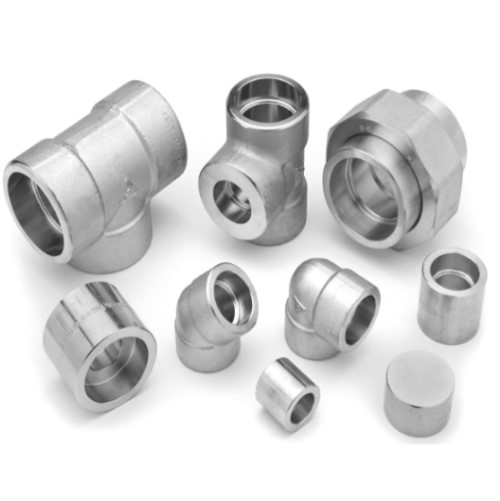- Mumbai, Maharashtra, INDIA.
Opening Hours: Monday - Saturday 9 am to 9 pm

Advantages of Socket Weld Pipe Fittings
- For socket weld joints, the pipe can be inserted into the recessed area of the fitting and both pipe and the fitting do not need bevelled preparation. This makes the installation and soldering process simple.
- Temporary tack welding is no needed for alignment because in principle the socket weld fitting ensures proper alignment.
- The weld metal cannot penetrate into the bore of the pipe.
- They can be used in place of forged threaded pipe fittings so the risk of leakage is much smaller.
- Construction costs are lower than with butt-welded joints due to the lack of exacting fit-up requirements and elimination of special machining for butt weld end preparation.
Disadvantages of Socket Weld Pipe Fittings
- The welder should ensure for an expansion gap of 1/16 inch (1.6 mm) between the pipe and the shoulder of the socket. ASME B31.1 para. 127.3 Preparation for Welding (E) Socket Weld Assembly says:
- In the assembly of the joint before welding, the pipe or tube shall be inserted into the socket to the maximum depth and then withdrawn approximately 1/16" (1.6 mm) away from contact between the end of the pipe and the shoulder of the socket.
- Socket Weld Pipe Fittings are usually resistant to about half the strength of the butt weld fittings. Therefore, SW fittings are mainly used for small pipes with a diameter of NPS 2 or smaller.
- For the socket weld pipe fittings, the price is much higher than with similar size of butt weld fittings.
- The expansion gap and internal crevices left in socket weld piping system promotes corrosion and make them less suitable for corrosive or radioactive applications where solids build-up at the joints may cause operating or maintenance problems.
- Socket welding is not acceptable for Ultrahigh Hydrostatic Pressure (UHP) in Food Industry application since they do not permit full penetration and often leave overlaps and crevices that are very difficult to clean, creating virtual leaks.
- The purpose for the bottom clearance in a Socket Weld Joint is usually to reduce the residual stress at the root of the weld that could occur during solidification of the weld metal, and to allow for differential expansion of the mating elements. This process takes a lot of time, precision and skills.
- Radiography is not practical on the fillet weld; therefore, correct fitting and welding is crucial. The fillet weld may be inspected by surface examination, magnetic particle (MP), or liquid penetrant (PT) examination methods.
